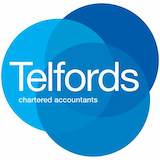
Flipping
Is 2023 going to be a good flipping year?
By Ritchie Clapson CEng MIStructE, co-founder of propertyCEO
Many people like the idea of a good flip: buy a property, refurbish, and sell for a profit. After all, the cost of acquiring a property is likely to be fairly modest, as will refurbishment expenditure, and you should be in and out relatively quickly. According to a 2021 report by Hamptons, the average flip sold during the pandemic produced a profit of £48,000.
That’s attractive.
But I’d advise you to have a good look at the water before jumping in.
Check the numbers
We first need to take a slightly closer look at Hampton’s £48,000 profit figure. Considering the period over which these numbers were calculated—while there was a global pandemic going on—where we saw house prices rising at a rate of close to 10% per annum. The stamp duty holiday had stoked the market and helped motivate many people to take the plunge and move house. And this was great news for flippers. If they purchased a property for £250k and sat on it for 12 months, that property would go up by £25,000 without them lifting a finger. It takes them more than halfway to Hampton’s reported £48,000 profit average.
Let’s assume that, of the average £48k profit, £23k came from adding value, with the remaining £25k coming from an underlying increase in the property’s value over the period they did the work. So far, so good; profit is profit, however you get it. But this year the housing market looks like it will be a different place. Most experts are predicting that house prices will fall in 2023, and while the estimates vary considerably, the general feeling is that we could see an adjustment of 5-12%, with house prices not increasing again until later in 2024.
So, let’s imagine that this £48k flip was done this year instead of during the pandemic. If house prices reduce by 10%, then our flipper’s numbers look very different. If they buy a £250k doer-upper whose value decreases by 10% over the time they own it, their starting point is a £25k deficit. If they then go on to add £23k’s worth of value (as they did in the previous example), then they’d be looking at a net loss of £2k instead of a profit of £48k. It’s quite a change, and while there are many variables, including the property’s value, the timing of the flip, and so on, the underlying message is clear: flipping works best as a fair-weather strategy. You want to be doing it when the housing market is in good shape and values are on the rise, and the chances of 2023 seeing a strongly rising market are, by all accounts, slim.
Another option
One of the interesting dynamics of the current market situation is that what’s bad for flipping a single residential property could be very good for converting a single commercial building into multiple flats. I term this ‘small-scale development’, and while it’s only one rung up the development ladder from a flip, it can be worlds apart when it comes to profitability.
Let me explain first why the timing could be very good, and then I’ll tell you why these sorts of projects are perfectly doable even if you’ve never tackled anything like it before.
Three costs are critical to anyone that develops property:
Cost 1. Acquiring a property
Santa didn’t bring me a crystal ball, but it would be logical to assume that commercial property prices will come down this year: we have a significant oversupply of unused commercial property that’s ripe to be converted; recession will force many businesses to close or sell their property assets; commercial property owners are aware that the value of their assets will be going down while, at the same time, the costs of maintaining them (mortgage rates, energy, security, business rates, etc.) are all going up.
Cost 2. Development work
With most commentators predicting a fall in house prices of 5-12% this year, volume housebuilders are likely to pull back on production as they will have no interest in releasing properties into a falling market; they will look to minimise any negative impact. Because these players make up a significant slice of the labour and materials market, we could end up with lots of tradespeople out of work and materials not being sold. This, in turn, makes both resources a lot cheaper to buy – supply and demand.
Cost 3. The price you sell at
If you buy a commercial property in mid-2023 and start works in late 2023 or early 2024, you should be ready to sell in late 2024 or early 2025. And this is when even the most pessimistic forecasters predict that house prices will rise again. Even the Office for Budget Responsibility (OBR) reckons house prices will increase in late 2024 and throughout 2025, so you’ll be entering a sellers’ market.
If your timing is off, and the cards don’t fall kindly, you always have the option to hold on to the flats you’ve built and rent them out until the market moves on and you’re in a better place to sell.
Vive la différence
The timing for doing a small-scale development could be excellent, but exactly how big is the difference between doing a flip and a commercial conversion? Well, the first difference is in the numbers; a small-scale development should net you between £100k and £500k profit, whereas a flip, as we’ve seen, is likely to target a lot less. The other key difference is in the workload. Small-scale developers don’t usually manage their own projects. Because there’s a bigger budget, they can afford to hire a professional project manager to oversee all the construction work on their behalf. It effectively moves them from the coalface to the boardroom (much less hands-on) and allows them to develop property in their spare time. It also means that, as a developer, you don’t need DIY or project management skills. You simply need to be able to oversee operations at a high level while a team of professionals does the heavy lifting for you.
Another significant difference between flipping and small-scale development is the amount of money you need to invest. Many flippers will stump up a 25% deposit and the cost of the refurbishment work from their own savings. For small-scale developments, most of the funding is borrowed from specialist commercial lenders who generally require the developer to put in a much smaller proportion of the required funding themselves. While the overall sums involved are usually greater than with a flip, the developer puts in less of their own money and gets far greater leverage than other types of property investment. In short, more profit for less cash invested and less work – it’s a powerful combination.
ABOUT THE AUTHOR
Ritchie Clapson CEng MIStructE is an established developer, author, industry commentator, and co-founder of leading property development training company propertyCEO. To discover how you can get into property development, visit our website here




